The UK Carrier Strike Group (UKCSG), led by HMS Prince of Wales, joined forces with the U.S. Carrier Strike Group 8, centred on USS Harry S. Truman, in the North Sea for Exercise Strike Warrior.
This sailing together was designed to highlight NATO’s unified maritime capabilities, demonstrating readiness to respond to threats in Europe and beyond.
Video shows two of the most powerful ships at sea in European waters. HMS Prince of Wales and the USS Harry S Truman joined forces to deliver a powerful statement of NATO’s ability to project power from the sea. (Video Crown Copyright 2024) pic.twitter.com/1srcBrBG0T
— UK Defence Journal (@UKDefJournal) October 25, 2024
This deployment of UK and US carrier groups in the North Sea sends a powerful message about the capability and unity of NATO forces. This exercise underscores NATO’s readiness to “deter aggression” and operate effectively in “high-risk environments,” hinting at a clear, if indirect, response to any potential threats close to European waters.
Statements from the US Navy have pressed on the exercise’s role in “responding to threats in high-risk environments” and maintaining NATO’s strength against any regional challenges. By bringing advanced air, sea, and support assets from multiple NATO nations, the exercise reinforces NATO’s commitment to protect its borders and respond decisively to any forces that could disrupt stability in the region.
The presence of both carrier groups, along with NATO’s most advanced aircraft and vessels, underscores a collaborative resolve that aims to act as a strong deterrent against any potential adversaries in the area.
This exercise marks a milestone for HMS Prince of Wales as the group prepares for a global deployment to the Indo-Pacific in 2025.
F-35B jets from @HMSPWLS plus F/A-18 Super Hornets and an E/A-18G Growler from the @USSHARRYSTRUMAN participate in the @NATO_MARCOM-led maritime vigilance activity Neptune Strike 24-2. pic.twitter.com/cY28F17la0
— UK Defence Journal (@UKDefJournal) October 25, 2024
UK F-35B Lightning jets from 809 Naval Air Squadron launched from the British carrier and joined U.S. Navy F/A-18 Super Hornets and an E/A-18G Growler from the Truman for coordinated flyovers and live ordnance exercises. “Strike Warrior has delivered a short and intense period of training… testing the group all the way from individual responses to a fire or flood through to complex long-range F-35B missions,” explained Captain John Cromie, Deputy Commander of the UK Carrier Strike Group.
Exercise Strike Warrior involves an array of forces, with participation from the Royal Navy, British Army, Royal Air Force, and NATO allies, including Norway, Denmark, Belgium, Germany, and Portugal.
Supporting the Carrier Strike Group’s anti-submarine operations, RAF Poseidon P8 maritime patrol aircraft contributed to the group’s defensive strategy, while NATO aircraft aided in protecting against mock aerial threats.
HMS Dauntless, a Portsmouth-based destroyer, led the air defence of the strike group. Commander Ben Dorrington, Dauntless’s Commanding Officer, noted that the exercise subjected his team to a “broad range of threats, including enemy air sorties and anti-ship cruise missiles.” His crew’s training enabled them to respond effectively, honing the ship’s protective capabilities.
Since departing Portsmouth, HMS Prince of Wales has logged 1,500 nautical miles, while its aircraft have conducted 71 sorties, accumulating over 200 flight hours. Reflecting on the progress made during the exercise, Captain Will Blackett of HMS Prince of Wales shared: “We have made huge strides – from improving our ability to deal with emergencies… to accurately delivering live munitions on simulated targets. This ship is amazing – and my people are even better.”


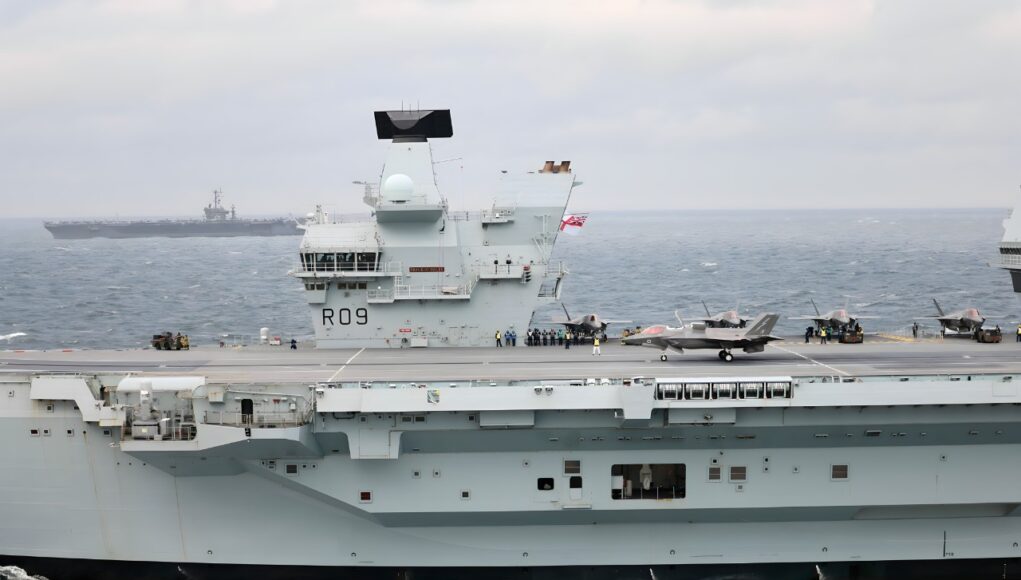
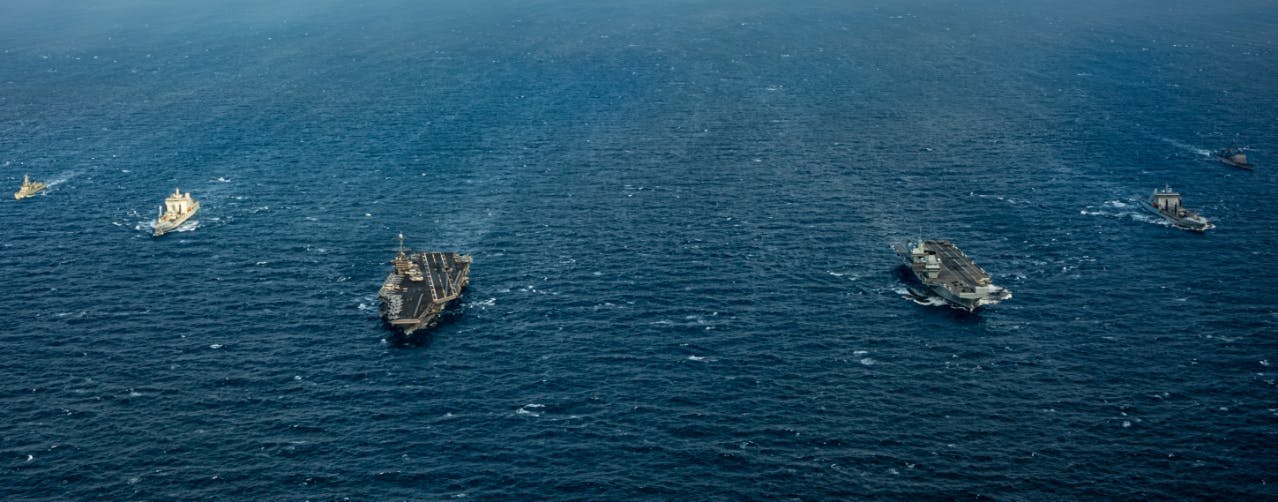
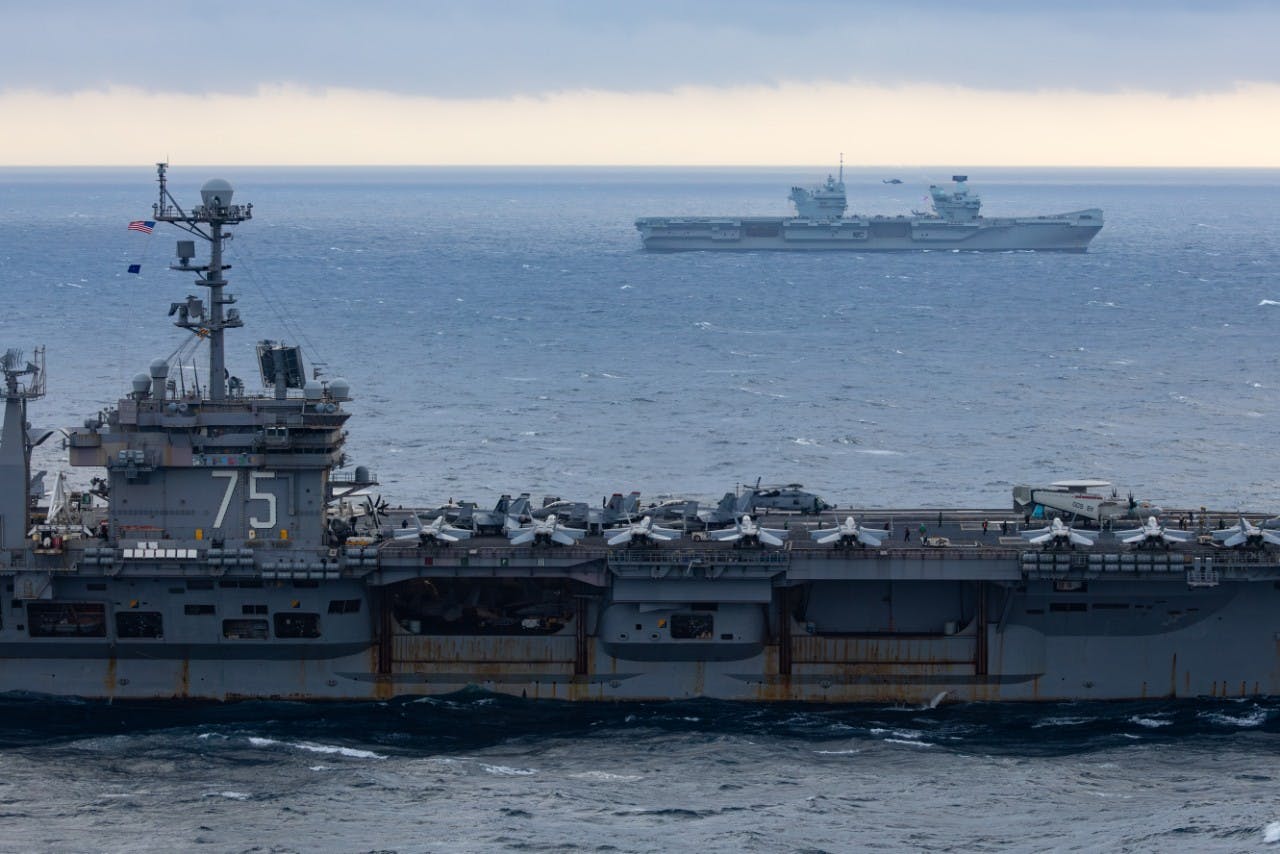
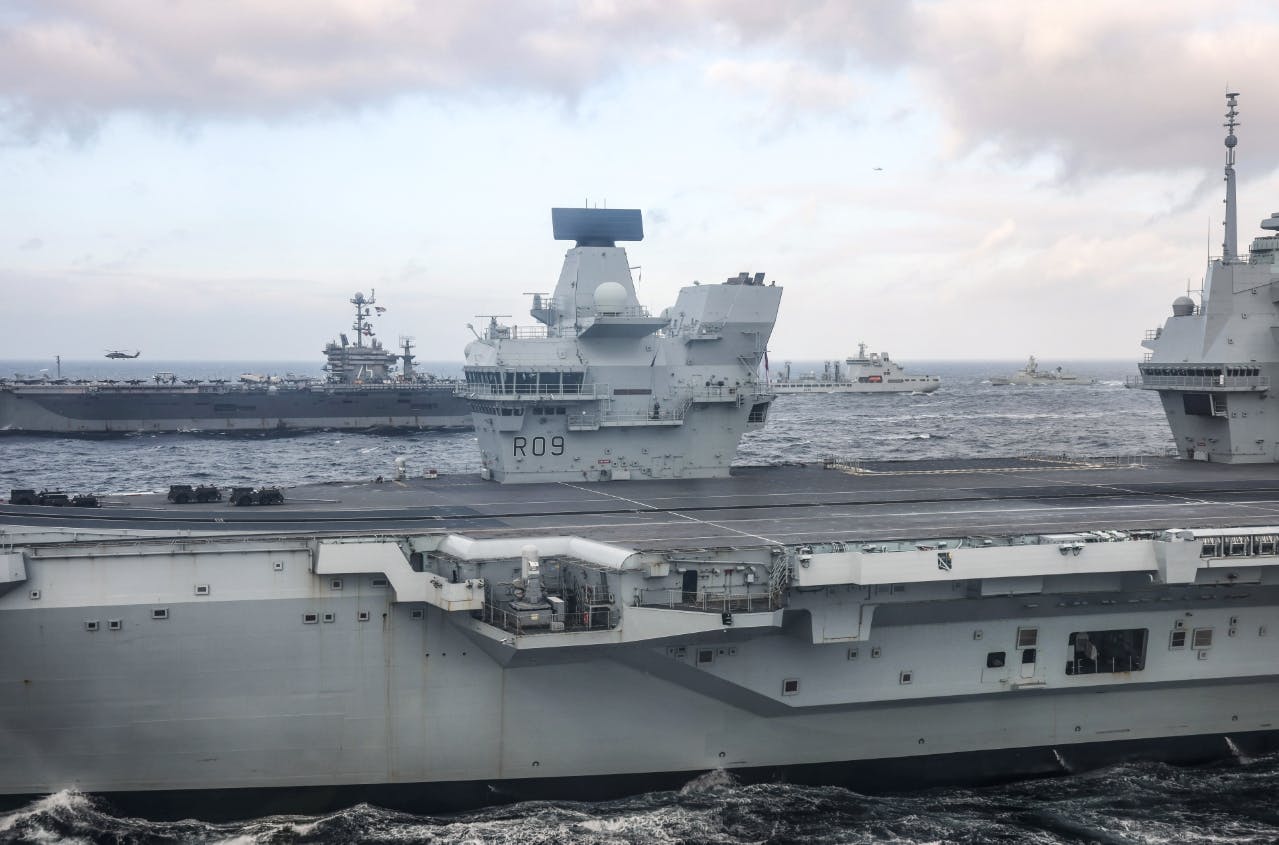
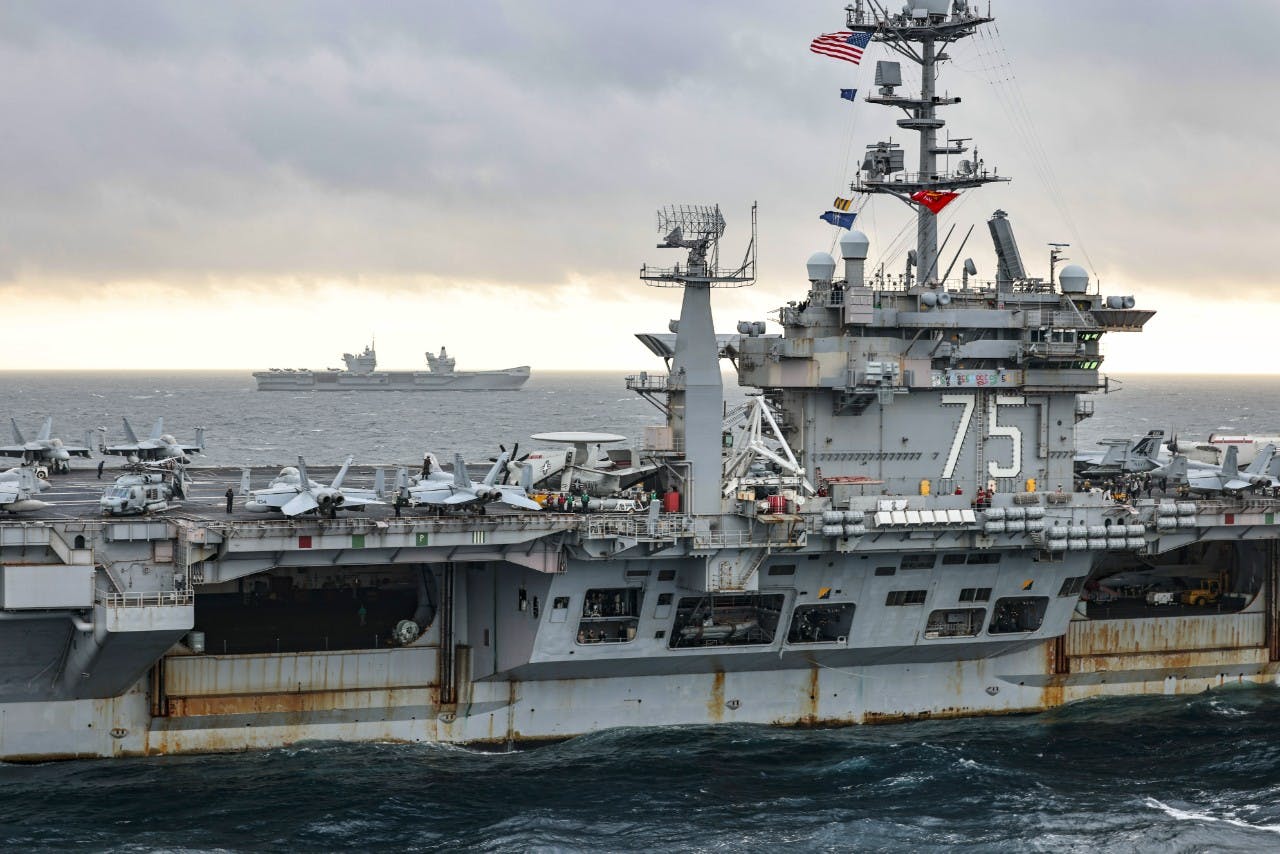
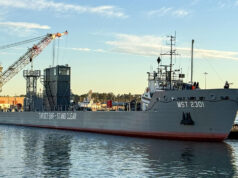
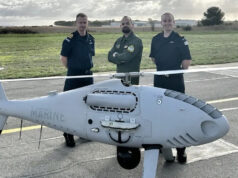
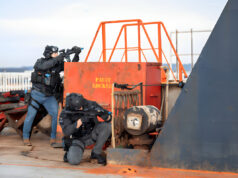
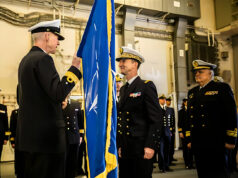
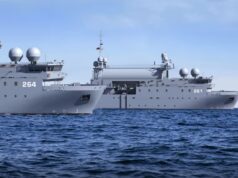
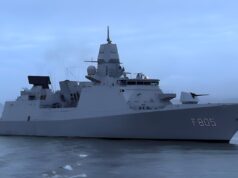
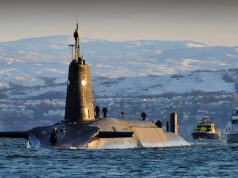
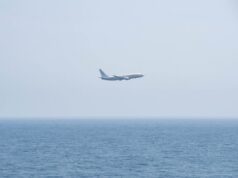
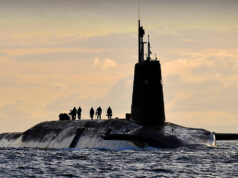


80 years of this sort of Co-operation goes beyond any government or President.
QE class are such a cleaner design than the American carriers.
American carriers have catapults and ours do not, and they carry upwards to a hundred aircraft of all different types, and they know how to use them we’re trying to remember how to do it. and they are better designed because they are used by a navy that makes us look like the local boat club.
While we are small much i of what you say is just not true. The design of the QE class is designed to minimise crew, create a sleeker , automated and optimised ship that while yes they carry a smaller compliment the older us carriers were not designed in the way the U.K. carriers were.
QE class are the only barriers designed from the outset for the f35.
I can criticise much of the U.K. forces but the comments from our U.S. friends on QE are positive on a cleaner, more open easier and more comfortable ship than the older carriers. The Gerald Ford class while suffering teething troubles and late are a US attempt to bridge the gap between der carriers and 21st century. You must realise U.S. carriers on the whole really old now. While they are bigger , more capable and more costly the QE offers far more bang for your buck as a result if squeezed funding. It’s just a shame we lack aircraft , support ships and RFA support.
Great to see
Good to see the big beasts together. Truman needs a trip to the paint shop! 😀
So good to see.
Note – Two Tides class AO’s operational and doing the job Government – where is the substantial pay rise and support??
As HMS Queen Elizabeth puts to sea I read press reports that Starmer has said that the Royal Navy will expand its presence in the Pacific in a move to counter China’s growing influence.
After Wednesday’s budget they wont have any excuse not to expand!
this government is woefully out of its depth. they’ve promised the earth to everyone, about everything and it’s a cheque that will bounce the navy,after the next review, will be smaller, not better. and banging on about our incredible carriers and cruiser sized frigates still not in the fleet, the frigates that are utterly knackered, the destroyers all six of them are getting flogged so hard that they will be worn out sooner than everybody expects it’s replacement still on the back of an old stationary shelf somewhere in the bilges of the MOD, the same den of incompetence and waste operated by the same people who made the mess we are in already
If he has made this statement let’s wait for a change in policy ,has Starmer does have a habitat of changing is mind. But if true more money 💰in defence would be a good start .Will we still have two Carriers after the budget ?
The pacific and china is completely irrelevant to GB/europe we need to stop being poodles to the septics when they have made it clear they’re going to leave nato anyway.Fck em and fck the pacific too.Time to focus on ourselves and our own foreign policy.
I find it bizarre we would want to be at the doorstep of the world most powerful industrial and populated country. China is not in our doorstep so why go to their region? That is how you start a conflict unfortunately and bleed UK tax payer
Back in the 1840s when we fought the Opium Wars, the world was already a small place and trade in China affected profits in Europe. Now, wars anywhere affect the world economy, including our own. A war between the world’s two largest economies over the producer of the computer chips we rely on, could easily collapse the UK economy and send us into a decade or more of economic depression.
Worse, China wishes to be the world dominant power and not just economically, while America wishes to keep that status for itself. Any such swapover would involve World War 3. So even if China could be trusted on Taiwan, and we’ve seen from Hong Kong it can’t, giving them free rein in the region would not only be a betrayal of other regional countries such as Malaysia and the Philippines it would prove to be nothing more than the opening salvo in something even bigger.
It is therefore in Britain’s sovereign interest to mix in now, while it can still have an effect, however small.
👍Exactly!
expand the presence in the Pacific? by sending another nighty offshore patrol ship? c’mon starmer, is that the best you can do?
Good to see that the Carriers we have now no longer look like dinky toys compared to the USN 😉
Phalanx: “I feel so lonely…”
I would love for a unreasonable show of force to china, so in my idea to do it, I propose “operation stand-off”
The deployment of a “super carrier strike group” to the Pacific. It would be centred around 6 aircraft carriers, 2 from the USA, and one from each, the UK, France, Italy and turkey.
Obviously in war time you would never combine assets like that, but in peace time, seeing 6 aircraft carriers sailing in formation would send a very specific and very strong worded message.
The deployment would have to be large, probably one of the largest displays ever done by NATO once you consider all the auxiliary ships, support ships and other combat vessels.
You do realise China has hypersonic missiles and could sink a fleet like that in minutes? P.S. So too does Russia and Iran. You need to stop watching Hollywood movies and Netflix.
I did say, and I quote verbatim “Quote” Obviously in war time you would never combine assets like that, but in peace time, seeing 6 aircraft carriers sailing in formation would send a very specific and very strong worded message.”End Quote”
And if you really wanted to take out six separate CSGs would probably be no more difficult, just require slightly more missiles. There is not a thing in nato service that can intercept them, so anything of significant value within range is toast by default.
And then even that isn’t the easiest option. Although the other party would have to be insane, one or two tactical nuclear weapons per CSG would neutralise them with a near 100% certainty.
Am I still here.
ooo look everybody,we’ve got two giant monkeys ships that can do f all.(because we’ve got nothing to put on them). we usually have them as ornaments in Portsmouth, to give the harbour tour boat something to sail past and keep the tourists happy. really, I’m not joking. people.sorry you’ve been on my tour boat for ages and not seen any ships, that’s because there aren’t any.
all of these mushy gushy comments ‘were doing awfully well and chucking our expensive whizz bangs on uninhabited rocks and fish doesn’t impress meat all there needs to be some real navy news, why isn’t venturer in the water? how advanced are the Belfast and active builds? we need to know what is going on and not hearing about our multi billion pound ornaments fanning around with foreign ships.
Show of force to whom?
Nobody saw it, Russia isn’t scared nor is Iran china or North Korea.
Are they worried the people might ask the Dutch for a better monarch again?
Ill tell you right now. Iran is scared of Israel on its own. North Korea is the retarded little brother of China who pose no threat. We are watching Russias efforts. China is the only real proposed threat.
Delusional
We need more money spent on defence on against any threats from china and Russia we live in an unstable world you can never have enough ships or planes to protect ourselves and everyone involved in nato . One day Russia might make that move again us Russia has started that the first target would be United Kingdom due to the military presence in this country and our capabilities against any foreign power outside of NATO if we want to survive we must be ready for any attack.
Unless Russia launches a nuclear attack on the UK it has virtually zero capability of attacking the UK by any other means.
They have been relentless in conducting hybrid conflict against the UK for the past 80 years. That has been the core mission of the KGB then FSB. Its why we invest in military intelligence and GCHQ as both misinformation and cyber crime are designed to undermine Democracy and support from the citizens, with specific attacks on key capabilities such as Public Health.
Kinetic effects would be an admission of failure in other Domains.
Thats a different area than the point that was made. I do totally agree they are terrible in those areas, along with NK and Iran, the digital interconnected world has never been so vulnerable.
Stop being so negative, pound for pound we can hold our own. You make this country sound like a has been but not too many countries would want to take us on 1 on 1. I’m very proud to be English
who is that to?
A pity that recent political and perhaps future relations between the US and Britain are so dire and one-way, with favour and investment going to free-rider Ireland, whilst a fractious UK -still in our ‘allies’ doghouse for EU Exit – struggles to pay for US kit. Nice show, but the US may further clobber trade (tariffs) and revenue – whilst asymmetric opponents bleed us with tactics at a cost of 1 to our 1000, and Commonwealth ‘friends’ carp or shift to China. We can’t even manage our maritime border, or fisheries: compare that with the USCG.
We can’t even stop a rubber boat across the English Channel. We need to secure our borders and patrol our seas.